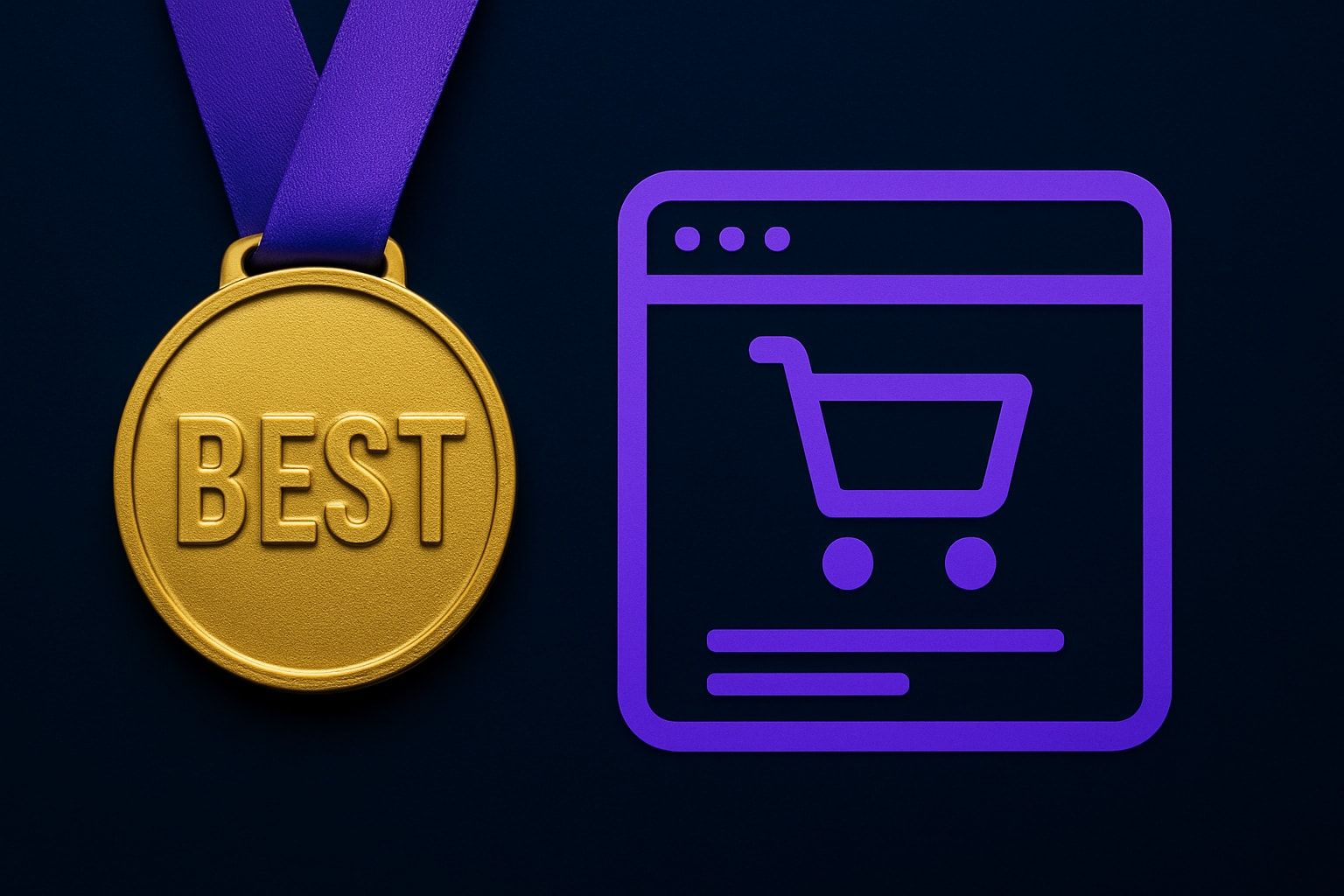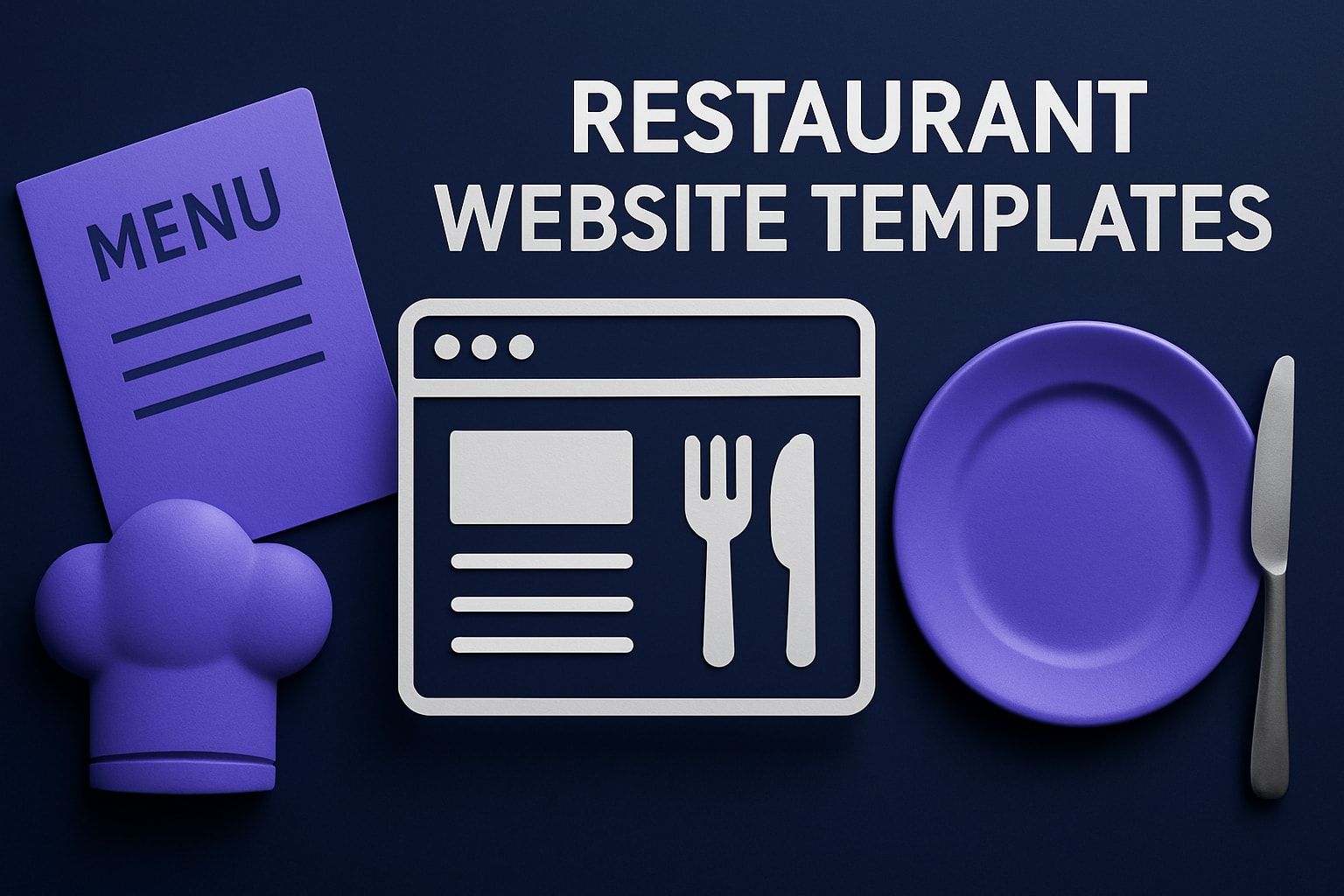6 Proven Tips to Improve Your Website in 2025
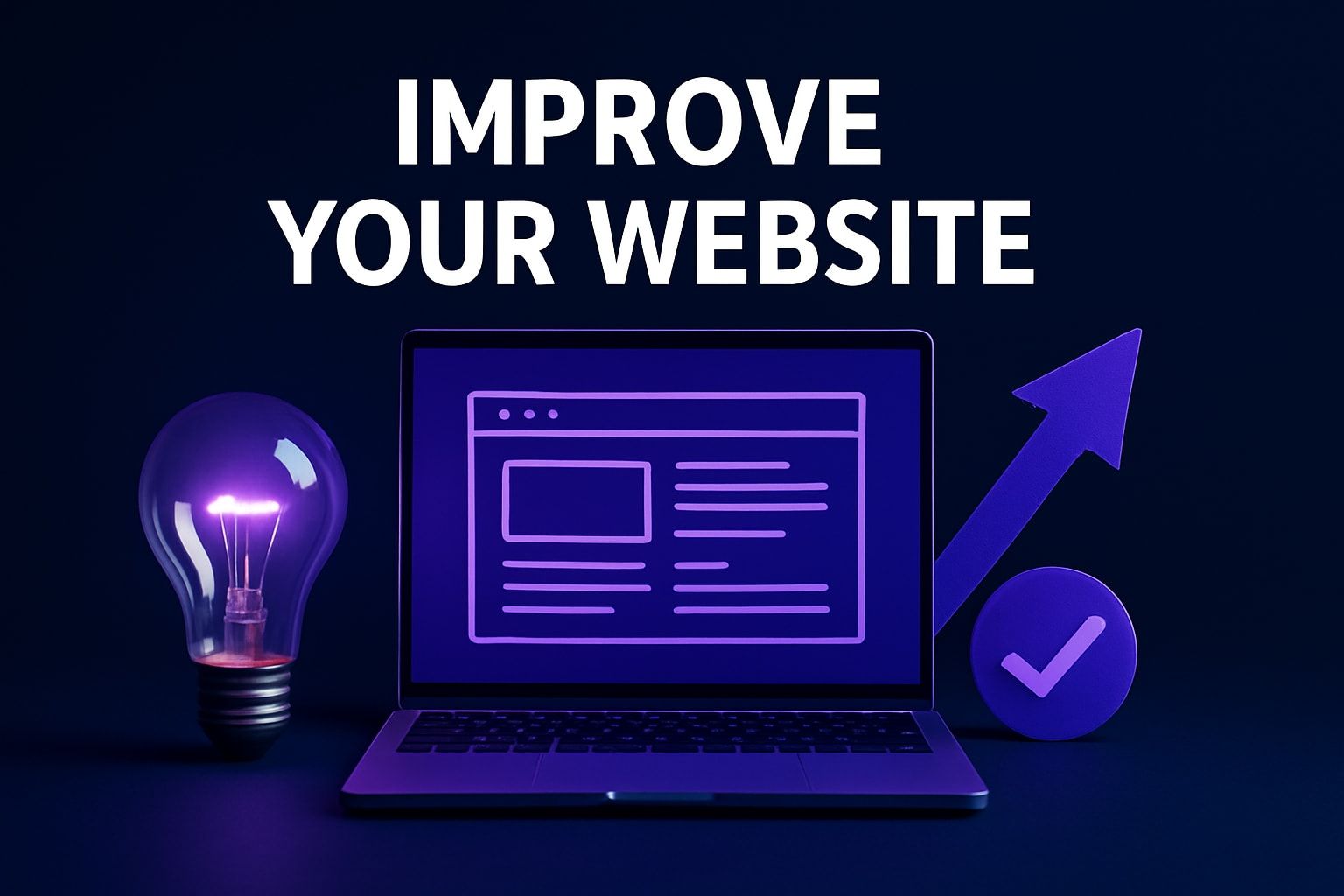
By Pietro Saman • November 11, 2025
Website performance is more critical than ever in 2025 as competition heats up and user expectations soar. Google’s latest algorithms put even more pressure on businesses to keep up.
Did you know that even small changes can dramatically improve your website? These tweaks can drive more traffic, boost engagement, and increase conversions.
A modern, optimized site means higher rankings, more qualified leads, and a stronger brand presence online. Ready to stand out? This guide reveals six proven tips to help you improve your website with actionable strategies and real-world examples.
Why Website Improvement Matters in 2025
In 2025, the digital world is more crowded than ever. Over 1.1 billion websites compete for attention, and users have endless options. If you want to stand out, you need to improve your website. Even small changes can make a dramatic difference in how visitors see your brand and interact with your content.
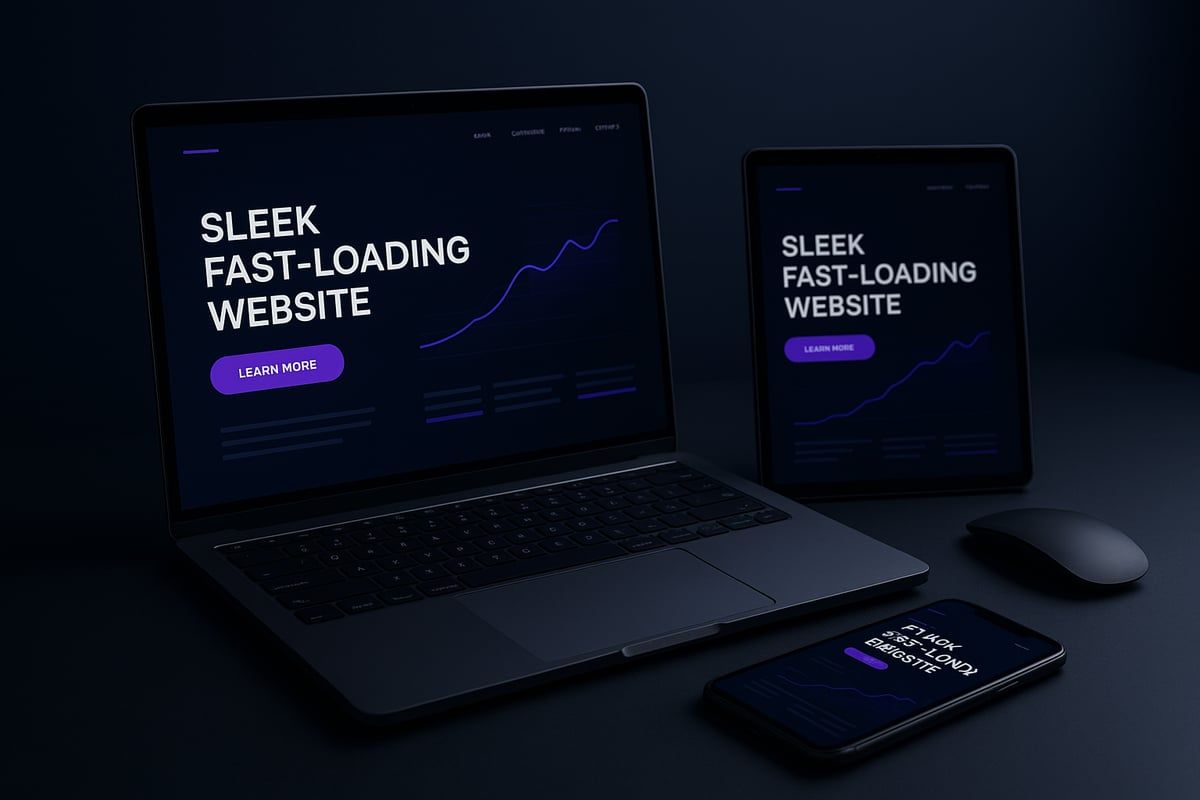
The Digital Landscape: Fierce Competition and Opportunity
Every day, millions of new sites launch, making it tougher to grab and keep user attention. To improve your website, you need more than just a pretty design. You need speed, relevance, and a seamless experience.
Businesses that invest in site optimization see up to double the conversion rates compared to outdated competitors. In this environment, even minor improvements can push you ahead of the pack.
User Expectations and Google’s 2025 Algorithm
Today’s users expect instant access. In fact, 53% of mobile visitors will leave if a page takes over three seconds to load. Google’s latest changes make it clear: user experience, mobile-friendliness, and quality content are now top priorities.
If you want to improve your website, you must keep up with these updates. For more details on current search trends, check out Google's 2025 Algorithm Updates. Meeting these standards gives you a real edge in organic search and customer satisfaction.
Security, Privacy, and Emerging Technologies
Regulations like GDPR and CCPA are stricter than ever. Compliance is not optional if you want to improve your website and protect your reputation. Users expect transparency and control over their data.
On top of that, the rise of AI, voice, and visual search is changing how people interact with sites. Your website must adapt to stay relevant and accessible to all users.
Real-World Impact: How Website Updates Drive Results
The proof is in the numbers. Companies that chose to improve your website in 2024 reported measurable gains in organic traffic, longer engagement, and higher conversion rates. These results show that investing in your site pays off, both now and in the future.
If you want your business to grow, you can’t afford to ignore these trends. Taking action today will help you build a stronger, more competitive presence online.
6 Proven Tips to Improve Your Website in 2025
Ready to future-proof your online presence? Here are six actionable strategies that will help you improve your website in 2025. Each tip is backed by real-world examples and practical advice, so you can start seeing results fast.

1. Optimize for Core Web Vitals and Page Speed
To improve your website in 2025, start by focusing on Core Web Vitals. Google’s ranking system relies heavily on these metrics, which include Largest Contentful Paint (LCP), First Input Delay (FID), and Cumulative Layout Shift (CLS). If your site fails these standards, you risk losing valuable search visibility.
Regularly assess your site using tools like Google PageSpeed Insights and Lighthouse. These will highlight performance bottlenecks and provide actionable fixes. For example, compressing images and minimizing JavaScript can dramatically reduce load times. Leverage browser caching and optimize server response times to further improve your website’s speed.
Mobile-first performance is crucial. With over 60 percent of web traffic coming from mobile devices, your site must load quickly on smartphones and tablets. Responsive, fast-loading sites keep users engaged and help improve your website’s bounce rate. In one case, a retailer improved LCP by 1.2 seconds and saw a 15 percent decrease in bounce rate.
Here’s a quick checklist to help you optimize for speed:
- Compress and serve next-gen images (WebP, AVIF)
- Minimize CSS and JavaScript files
- Implement lazy loading for images and videos
- Use a Content Delivery Network (CDN)
- Regularly audit site speed across all devices
A fast, responsive site not only improves user satisfaction but also helps you improve your website rankings and conversions.
2. Deliver a Mobile-First, Responsive Experience
Mobile optimization is non-negotiable if you want to improve your website in 2025. Mobile traffic has officially surpassed desktop, and Google’s mobile-first indexing means your mobile site is now the primary version considered for ranking.
Responsive design ensures your content looks great on every device. Use flexible grids, scalable images, and touch-friendly navigation to create a seamless experience. Test your site on multiple devices and browsers to catch inconsistencies that could frustrate users.
Avoid intrusive pop-ups and ensure that call-to-action buttons are easy to tap. Fast mobile load times are essential to improve your website’s engagement and reduce abandonment. For example, a service provider updated to a responsive layout and saw a 30 percent increase in mobile conversions.
Key elements of a responsive, mobile-first site:
- Fluid grid layouts that adapt to any screen size
- Scalable images and font sizes
- Touch-friendly menus and buttons
- Minimal, distraction-free design for small screens
By prioritizing a mobile-first approach, you improve your website’s reach, accessibility, and user satisfaction across all platforms.
3. Enhance Content Quality and Relevance
Content remains king when you want to improve your website for 2025. High-quality, relevant content attracts visitors and keeps them engaged. Start by updating outdated information, adding new insights, and removing thin or duplicate content.
Implement structured data (schema markup) to help search engines better understand your site’s content. Use E-E-A-T (Experience, Expertise, Authoritativeness, Trustworthiness) principles to build credibility and trust. Incorporate various types of multimedia—videos, infographics, and interactive elements—to improve dwell time and enhance the user experience.
A blog that refreshed old articles saw a 40 percent increase in organic traffic, proving the value of content updates. Regularly publish fresh content that addresses user intent and trending topics to improve your website’s relevance.
Tips to boost content quality:
- Use keyword research to target what your audience is searching for
- Add expert quotes, case studies, and original insights
- Break up text with headings, lists, and visuals
- Remove or merge underperforming pages
Consistently improving your website’s content ensures you stay ahead in search rankings and deliver more value to your audience.
4. Prioritize Accessibility and Inclusive Design
Accessibility is essential if you want to improve your website for everyone, including users with disabilities. Following WCAG 2.2 guidelines—such as providing descriptive alt text, ensuring sufficient color contrast, and enabling keyboard navigation—makes your site more usable and inclusive.
Implement ARIA landmarks and semantic HTML to enhance compatibility with screen readers. Regularly test your site with tools like WAVE and Lighthouse to ensure ongoing compliance. An e-commerce brand that improved accessibility saw a 20 percent reduction in bounce rate among disabled users.
Accessibility not only broadens your audience but also helps you improve your website’s SEO. Search engines favor well-structured, inclusive sites. Plus, accessible design helps you avoid legal risks and demonstrates social responsibility.
Accessibility checklist:
- Use alt text for all images and icons
- Ensure color contrast meets WCAG standards
- Provide keyboard navigability for all interactive elements
- Label form fields clearly and provide error messages
Making your site accessible is a smart, ethical way to improve your website and reach more people.
5. Strengthen Website Security and Privacy
Security is a top concern for users and a critical factor if you want to improve your website. Implement HTTPS with an SSL certificate to encrypt data and protect user privacy. Regular security audits help you identify and patch vulnerabilities before they become problems.
Update plugins, themes, and core software frequently to keep your site secure. Comply with privacy laws by displaying clear cookie policies, privacy notices, and opt-in forms. A SaaS company that switched to HTTPS saw higher trust signals and improved search rankings.
Best practices for website security:
- Use strong, unique passwords and enable two-factor authentication
- Schedule regular website backups
- Limit user permissions and review access logs
- Monitor for malware and suspicious activity
Security breaches can damage your reputation and result in legal penalties. By prioritizing security, you not only protect your users but also improve your website’s credibility and performance.
6. Leverage AI and Automation for Personalization
AI and automation are game-changers if you want to improve your website in 2025. Personalized experiences increase engagement and conversions by delivering content, product recommendations, and support tailored to each visitor.
Use AI chatbots for instant customer support, automate content suggestions, and segment users for targeted email campaigns. Analyze user behavior to present dynamic content that matches their preferences. An online retailer who used AI to personalize product pages saw an 18 percent boost in sales.
AI tools streamline workflows, freeing up your team for strategic tasks. Stay updated on emerging technologies to keep improving your website’s design, UX, and conversion rates.
For more ideas on how AI can help you personalize and improve your website, check out this AI assistant for website personalization.
Key ways to use AI and automation:
- Implement chatbots for lead capture and support
- Automate product or content recommendations
- Personalize landing pages and offers based on user data
- Use predictive analytics to inform design and content updates
Embracing AI and automation allows you to continually improve your website, delivering a modern experience that meets the expectations of 2025 and beyond.
Measuring Success: Key Metrics to Track Website Improvements
Understanding how to measure progress is essential when you improve your website. Without clear metrics, you might miss the real impact of your efforts or overlook areas needing more attention. Focusing on the right data can help you fine-tune your approach and maximize your results.
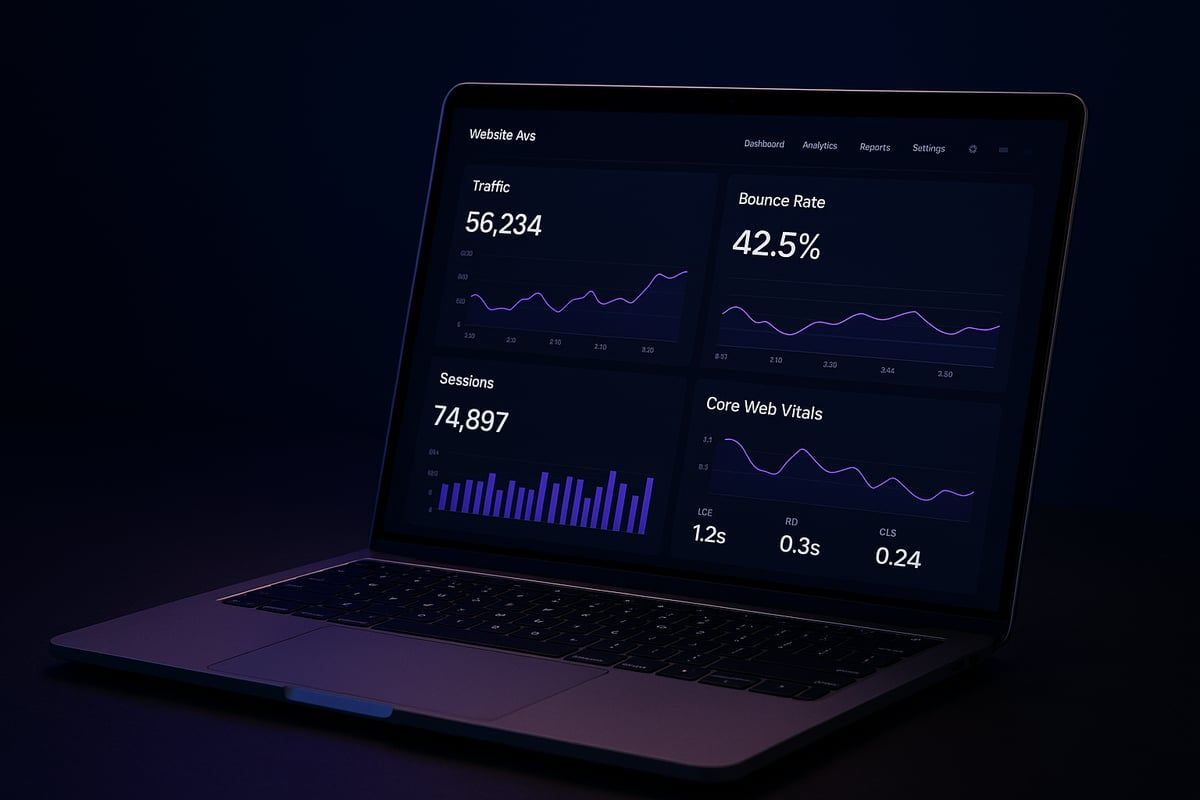
Tracking Core Web Vitals for User Experience
Core Web Vitals are a cornerstone when you improve your website, as they directly reflect how users experience your pages. Focus on metrics such as Largest Contentful Paint (LCP), First Input Delay (FID), and Cumulative Layout Shift (CLS). These indicators reveal how quickly content loads, how responsive the site feels, and how stable the layout remains during interaction.
Use tools like Google PageSpeed Insights or Lighthouse to monitor these values regularly. Fast, stable, and responsive sites tend to rank higher and keep visitors engaged. If your site lags in any of these areas, prioritize fixes to see immediate gains.
Monitoring Traffic, Engagement, and Conversion Rates
To truly improve your website, you need to watch how users find and interact with your content. Google Analytics provides insights into traffic sources, bounce rate, and average session duration. These metrics show whether your optimization efforts are attracting and retaining visitors.
Conversion rates, such as sign-ups, sales, or downloads, are critical for measuring business impact. Set up specific goals in your analytics platform to capture these actions. Comparing before-and-after data highlights which changes are delivering the best results.
Key Metrics Table
| Metric | What It Measures | Why It Matters |
|---|---|---|
| Traffic Sources | Where visitors come from | Evaluates marketing channel success |
| Bounce Rate | % leaving after one page | Identifies engagement issues |
| Conversion Rate | % completing key actions | Directly tied to business outcomes |
Leveraging Behavioral Analytics and UX Tools
Understanding user behavior is vital when you improve your website. Tools like heatmaps and session recordings help visualize where users click, scroll, or drop off. These insights reveal friction points or confusing elements in your design.
Platforms such as Hotjar or Crazy Egg can show you which areas attract attention and which are ignored. By combining this data with traditional analytics, you can prioritize high-impact changes. For a comprehensive toolkit, check out the Best SEO Tools of 2025 to enhance your measurement capabilities.
Evaluating Accessibility and Running A/B Tests
Accessibility should be a priority every time you improve your website. Regularly assess your site's accessibility scores using tools like WAVE or Lighthouse. Look for issues such as insufficient color contrast, missing alt text, or poor keyboard navigation.
A/B testing is another powerful way to validate improvements. By presenting different versions of a page to segments of your audience, you can see which changes have the most positive effect. Businesses that consistently track these metrics saw a 25% improvement in ROI after updating their sites.
Action Plan: Implementing These Tips for Lasting Results
Transforming your site takes more than just knowing what to do—it requires a clear, actionable roadmap. To truly improve your website in 2025, turn strategy into action with a focused plan.
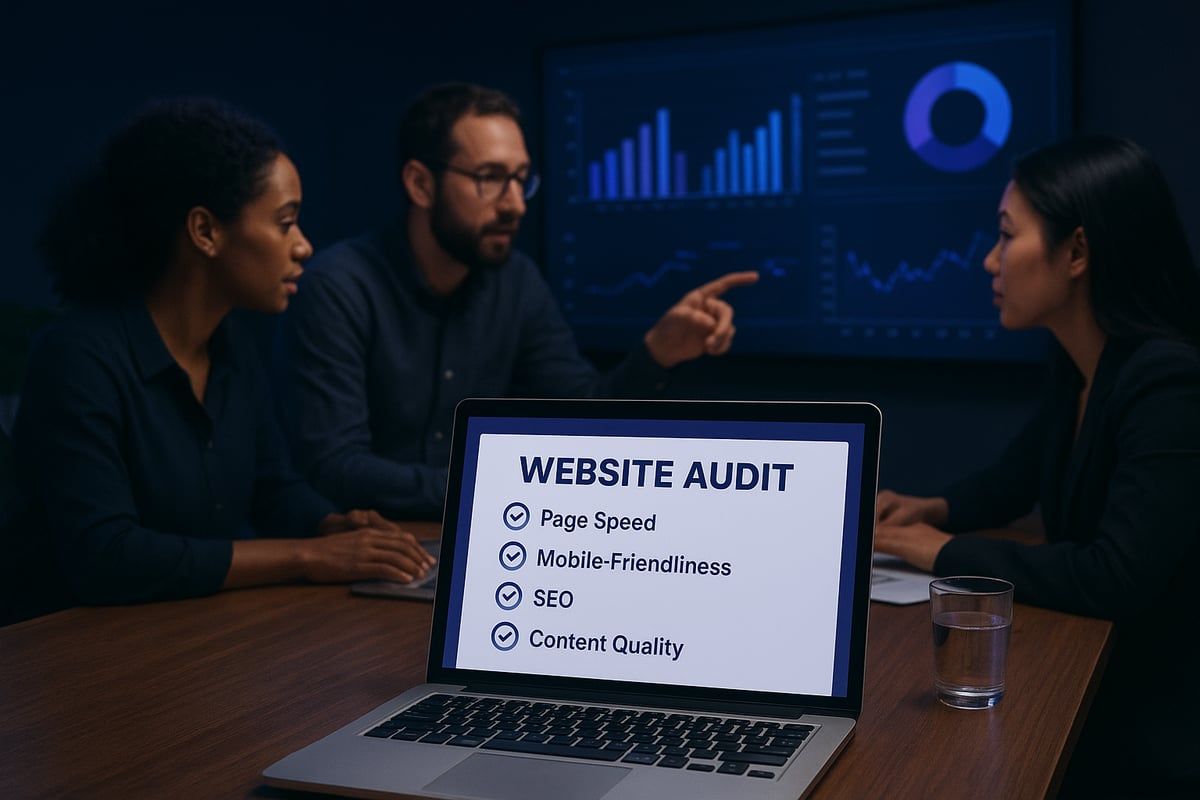
Start by assessing your site's current strengths and weaknesses. Create a prioritized checklist for each of the six proven tips. This way, you can identify the most impactful areas to improve your website right away.
Sample Action Checklist:
| Step | Task Example | Owner | Timeline |
|---|---|---|---|
| Core Web Vitals | Run Lighthouse audit, compress images | Dev Team | 1 week |
| Mobile Responsiveness | Test on devices, update CSS grid | Designer | 2 weeks |
| Content Quality | Refresh outdated posts, add multimedia | Content Lead | 2 weeks |
| Accessibility | Add alt text, check color contrast | Dev Team | 1 week |
| Security & Privacy | Update SSL, review privacy policy | IT/Security | 1 week |
| AI & Automation | Integrate chatbot, analyze personalization options | Marketing | 3 weeks |
Assign clear responsibilities to your team for each task. Set realistic deadlines so you can steadily improve your website without overwhelming your resources.
Schedule regular audits to catch new opportunities and address any issues that arise. These audits help you stay proactive and ensure your site continues to perform at its best.
Invest in ongoing training for your team. The digital landscape evolves quickly, so learning new skills is crucial to improve your website over time. Lean on expert resources like SEO strategies for better rankings to stay informed about the latest techniques.
Engage with online communities and professional networks. Sharing experiences and learning from others can lead to fresh ideas and solutions you might not have considered.
Remember, continuous improvement is the secret to long-term success. A mid-sized business that followed a step-by-step plan saw steady growth, increased conversions, and stronger brand authority. Treat your site as an evolving asset, and you’ll always find new ways to improve your website as the industry shifts.
Now that you’ve got these six proven tips under your belt, imagine what your website could look like next year—faster, smarter, and more engaging for every visitor. With Avantiy’s AI-powered site builder, you don’t need to stress about coding or keeping up with endless updates. Whether you’re just starting out or ready to grow, you’ll have all the tools and support you need to put these strategies into action. Why wait to see results when you can start making impactful improvements right now?
Start Building Your Website Toda
Stay up to date with the latest news and events
Sign up to get industry insights, trends, and more in your inbox.
Contact Us
We will get back to you as soon as possible.
Please try again later.
SHARE THIS

